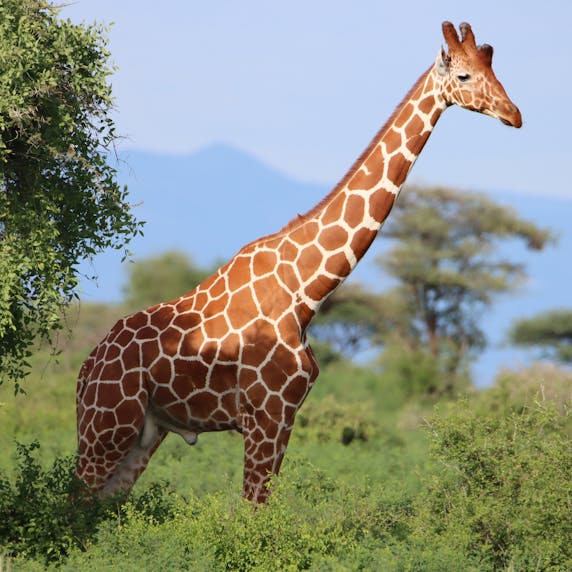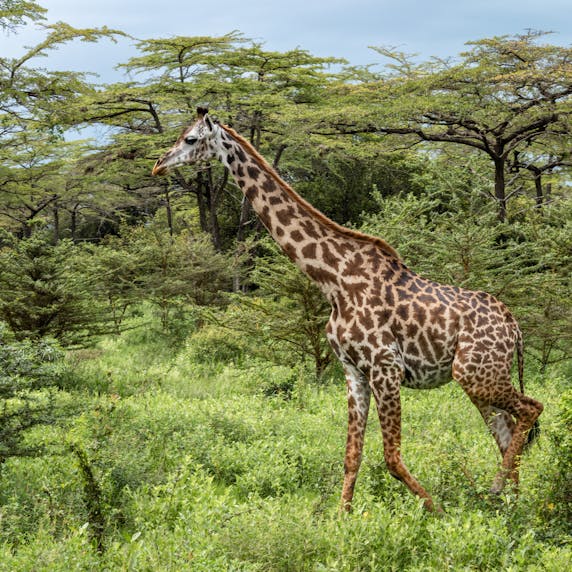
With large eyes and keen sight, the reticulated giraffe scans the African savannah, on the lookout for predators. Because it sees them coming from a great height, most predators such as lions have no chance of catching the giraffe. Unfortunately, poachers do manage to hunt wild giraffes and the reticulated giraffe is now considered endangered. As a participant in the European population management program of the reticulated giraffe, Rotterdam Zoo is committed to protecting these amazing animals, which have been on the zoo's logo since 1941.
Giraffa reticulata

Up to 30 years in the wild
♀ 4.5 metres
♂ 5.5 metres
3.5 – 4.8 metres
♀ 500 – 1,200 kilograms
♂ 800 – 1,930 kilograms
Giraffes can be recognized by their long necks and tall legs. On the head, they have two short, knobby horns also known as ossicones. Males also have a bump on the forehead. Reticulated giraffes can be distinguished from the three other species of giraffe by their pattern. Their spots have straight edges, making the white-yellow fur between them resemble a kind of reticle, hence the name. In other giraffe species, these spots tend to be more jagged.
The reticulated giraffe is native to the savannas and shrublands of East Africa, including Kenya, Ethiopia and Somalia. These are mostly dry areas with scattered acacia trees, the giraffe's main food source. As a result, reticulated giraffes often travel long distances in search of food.
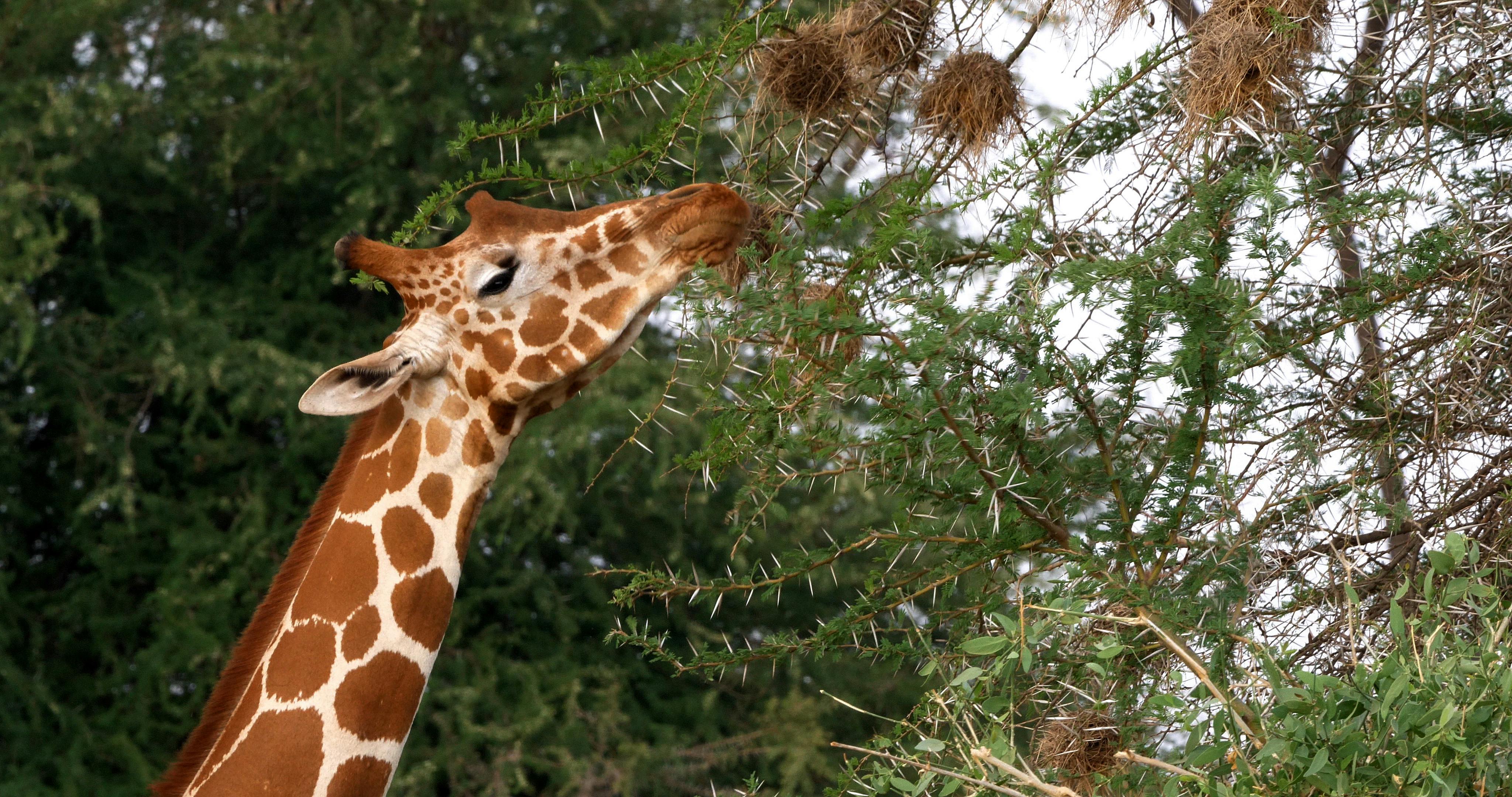
Giraffes are true leaf eaters, also known as browsers. They use their long necks to reach leaves high up in the trees on the savannah. Their favourite leaves come from the acacia tree, which also contains a lot of water. This means that giraffes drink much less often. But to reach the leaves, giraffes have to avoid the long thorns on the branches of the acacia tree. To do this, they use their flexible, long tongues to deftly avoid the thorns and grab the leaves.
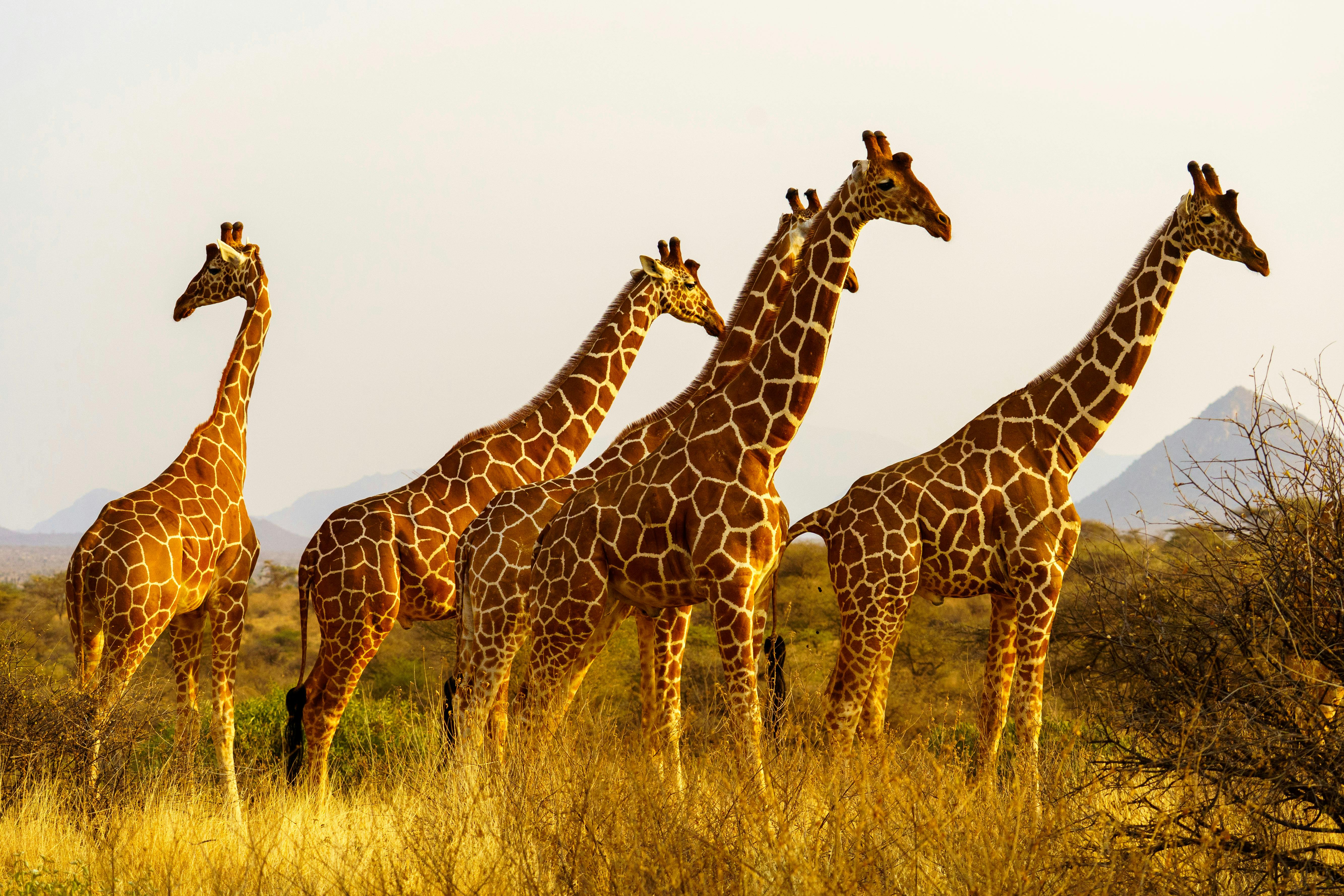
Giraffes are social animals that live in loose groups. Males often stay with a group of females and their young, but there are also groups of males and mixed groups. Males often live alone.
Giraffe groups sometimes split up and at other times come together with other giraffes. As far as we know, there is no clear hierarchy within giraffe groups.

Giraffes do not have a fixed mating season and can reproduce at any time of the year. However, there seems to be some correlation between periods when food is plentiful and when giraffe calves are born.
The battle for females is fierce among male giraffes. They use their heads as weapons. The longer the neck, the harder he can strike with his head and thus the greater the chance that he will win the fight.

Giraffes give birth standing up, which means that the calf falls to the ground from a height of about two metres at birth. However, the calf is able to stand on its legs after just one hour. It has to, because it soon has to follow its mother, who is looking for food. It is better protected from predators, for whom a young giraffe is easy prey, when it is with its mother. Giraffes suckle until they are about one year old.

Adult giraffes are so large that most predators prefer to stay away from them. Nevertheless, giraffes are often wary of lions. Fortunately, their large eyes allow them to spot danger from afar. Other ungulates, such as zebras and antelopes, therefore like to stay close to giraffes. The smaller herbivores can quickly tell from their body language when something is wrong.
If a lion does come too close, the giraffe can deliver powerful kicks with its long hind legs. As a lion, you don't want to get hit by those!

Kenya's population has grown rapidly over the last 50 years. To feed this growing population, the amount of agricultural land has also increased. In addition, many new houses and roads have been built. As a result, the reticulated giraffe's habitat has shrunk considerably and become fragmented. Furthermore, the reticulated giraffe is a popular target for hunters. These are the main reasons why the reticulated giraffe is now endangered. Fortunately, the number of reticulated giraffes seems to be on the rise again due to conservation efforts in the wild.
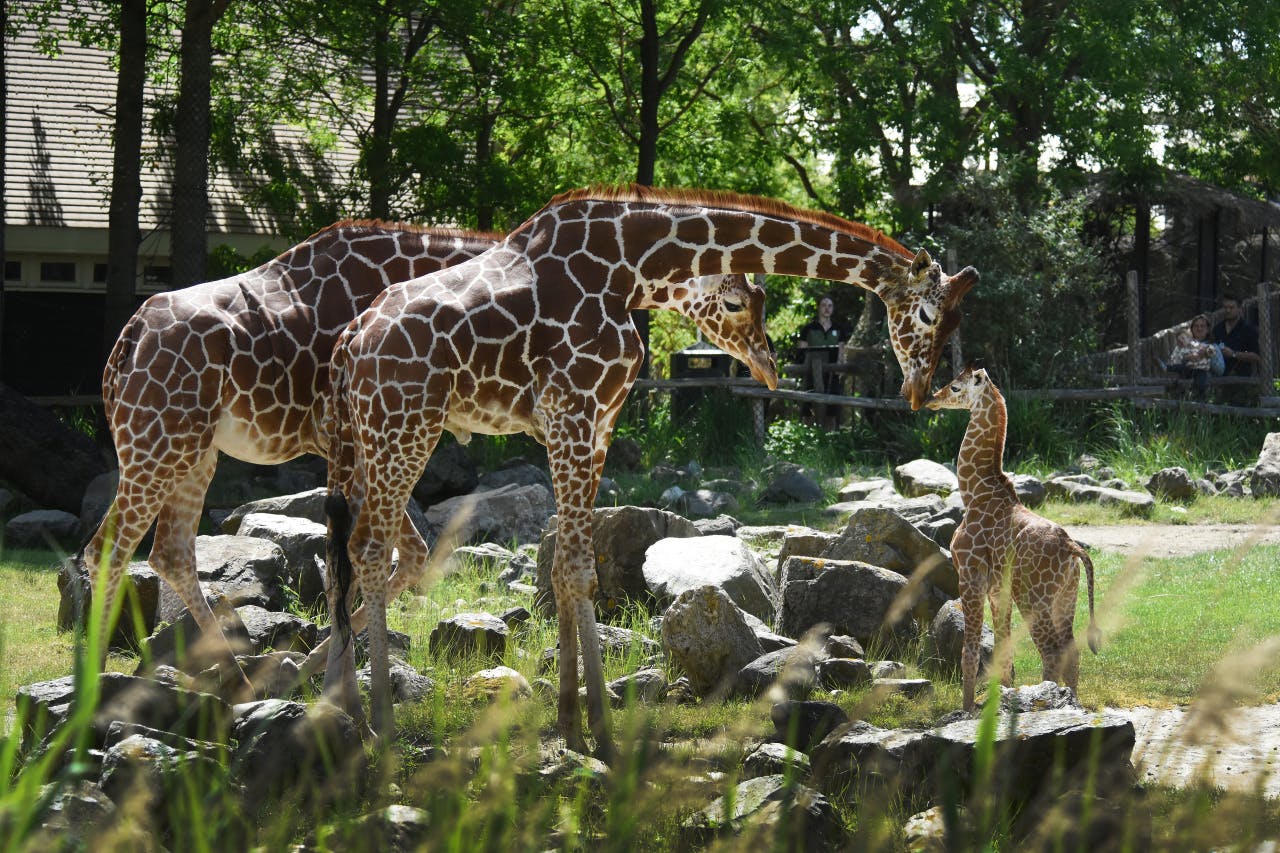
Rotterdam Zoo takes part in the European population management programme for reticulated giraffes. Based on the pedigree of reticulated in zoos, the coordinator decides which animals are best suited to each other for healthy offspring. These young animals are then transferred to other zoos, where they form the next generation. In this way, we are building up a healthy population as a reserve for the wild animals, with the ultimate goal of returning reticulated giraffes to their natural habitat when conditions there are favourable.
Surprise the reticulated giraffe with a gift from his wishlist

For €2.50 you can contribute to a healthy meal for the reticulated giraffe.

For €5 you contribute to a better environment for the reticulated giraffe.

For €10 you contribute to education about the reticulated giraffe.
